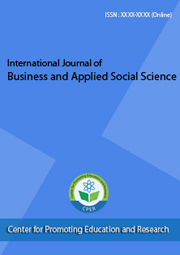Journal Menu
current
VOLUME; 7, ISSUE; 2, FEBRUARY 2021
Table of Contents
Articles
Author(s): Prof. Assoc. Dr. Shurki MAXHUNI, Prof. Assis. Dr. Demir LIMA
Full Text
1043 1110
1043 1110
Abstract:
The high percentage of fat in whey during the production process of cheese mozzarella from the milk of buffalo standardized to 3.2% compared with that without standardizing with 7.95% fat cheese production mozzarella, is an economic value to distinguish who was with greatly affected the profitability of the industry for the production of cheese, or in the work of the farmers who make the processing of milk into cheese. Whey, the liquid residue of cheese and casein production, is one of the biggest reservoirs of food protein remaining largely outside human consumption channels. Milk whey - the serum or watery part of milk that is separated from the curd in making cheese. Whey protein is the name commonly applied to milk serum proteins.In the milk industry “Bylmeti” in Fushë Kosovë, we made three experiments with 500 l of milk from each production of whey from curds. We get three samples for analysis of physical and chemical properties. We have taken 48 samples of milk and 48 samples of whey, where we analyzed the physical and chemical properties of all 96 samples. Analyzes are made for setting the exact percentage of fat in the dough whey acquired from standardized milk and the non-standardized and is made calculative profit calculation of the percentage of fat in the dough whey.
From the profit of our results, we conclude that from the economic aspect should be done anyway standardization of milk at 3.2% fat because fat milk without standardized as a percentage of its long production process pulp Whey exceed the whey and can Whey of pulp obtained by slightly distinguish them milk cheese produced from standardized.






